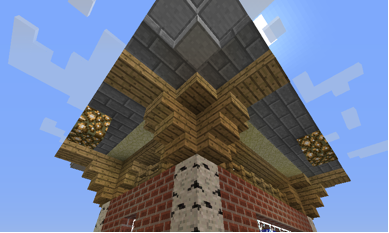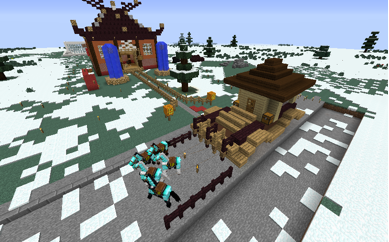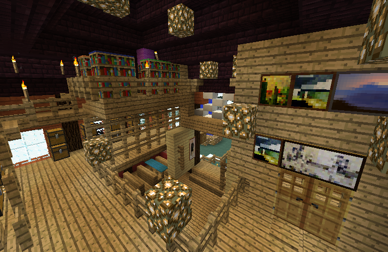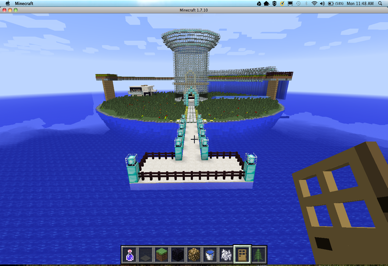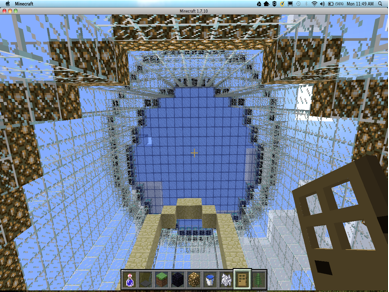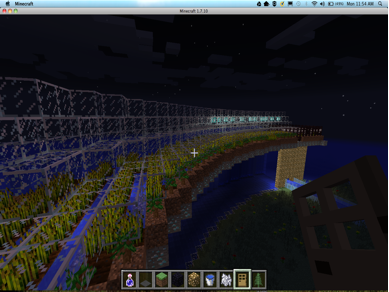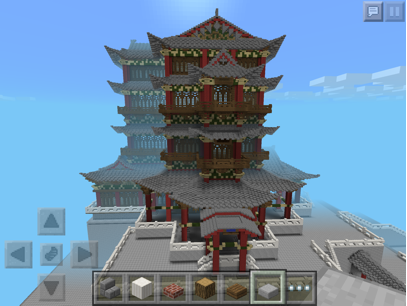Gamification Strategies for TESOL Students in STEM Fields
|
|
|
DOI: https://www.doi.org/10.69732/QGVF6335
At the University of Colorado Boulder’s International English Center (IEC), students from all over the world develop their English proficiency and academic skills with the intention of studying at a university in the United States. A significant number of these students intend to study engineering. A U.S. engineering degree has garnered a reputation for being prestigious and marketable in the global economy. Many students claim that such a degree will lead to a desirable job upon return to their home countries.
New students at the IEC arrive with varying levels of engineering education. Students have either already earned undergraduate engineering degrees or have had little formal engineering education. In either case, studying engineering and matriculating in a degree program often take precedence over improving academic English proficiency. Since vocational identity seems to play an important role in motivating students to succeed in their English studies, the IEC has begun offering upper-level, content-based science, technology, engineering and math (STEM) courses.
These courses aim to develop students’ proficiency in academic English by offering them the opportunity to study English in the context of their chosen field. Founded upon research-supported curriculum design that ensures content accuracy, such courses provide an opportunity for students to engage in authentic engineering practices, such as project planning and implementation. This article presents the curricular design for a project-based STEM course, “English for Engineering,” and reviews our approaches to teaching the course and staging the course within Desire2Learn (D2L), the University of Colorado Boulder’s course management system.
ENGLISH FOR ENGINEERING: A CONTENT AND PROJECT-BASED APPROACH
“Project-based learning is used to enhance learners’ problem-solving skills in a practical way. They conduct research on their projects. They apply their skills. They communicate their ideas to others (Matsuura, 2006), often using a variety of mediums.” (Learning, 2012)
We are not engineering experts. Mastery of the subject requires years of formal education and practical experience. Therefore, in order to develop content-based language learning curriculum, we focused on learning objectives within our instructional repertoire: content vocabulary, oral communication, and grammatical accuracy and clarity in writing. Further, in light of our goal to motivate students with authentic practices, we incorporated design and problem-solving content provided by teachengineering.org and other similar sites. In our case, students were presented with two project options: build a virtual structure using Minecraft, a popular computer-based sandbox game, or design and construct a physical Rube Goldberg machine.
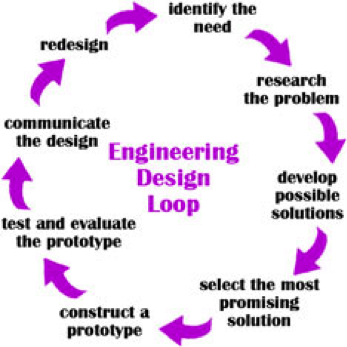
Minecraft is a sandbox video game that provides a virtual space in which players may build a variety of structures, functional machines, or models of real-world systems using virtual building blocks. In our class, students use the virtual space to test engineering ideas in a low-stakes environment. Throughout the design process, students meet the course’s language objectives by engaging in communicative activities based upon the Engineering Design Loop and other engineering design methods (See figure 1.0).
In addition, students communicate with each other orally and in writing to gain insight into their peers’ design successes and struggles. As a final project, students write an extensive design report containing an abstract, literature review, and methodology sections that detail how to recreate their design and list resources used. In short, Minecraft was chosen as a project platform because it provides a low-stakes engineering design environment which facilitates the connection that students make between their identities as both prospective engineers and language learners.
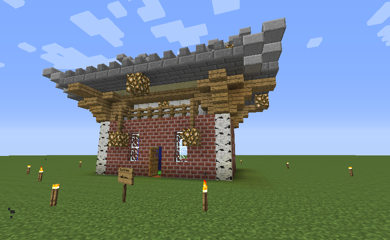
The Rube Goldberg project option provides students an opportunity to solve actual physical problems using simple and complex machines. Like the Minecraft designs, the Rube Goldberg structures become the topic of students’ design loop and final design report. The projects are intended to facilitate authentic student writing and ownership of the final written and physical products. Rube Goldberg machines are not new to academic engineering. Purdue University in Lafayette, IN has long held contests meant to inspire “college students nationwide… to design a machine that uses the most complex process to complete a simple task” (“Rube Goldberg Contest at Purdue”, 2014). For these machines participants attempt to complicate a simple task, such as watering a plant or putting out a candle.
Rube Goldberg Machine Sample Projects:
By defining their own, complex process for completing the task, students create a unique, self-defined topic for academic writing tasks. Instead of addressing abstract ideas from a textbook, which we have noticed does not always inspire students to carefully compose their academic writing, they may more purposefully report their design process and findings using the academic English skills they learn in their other classes.
By using these project-based approaches accompanied with engineering design content, we have tried to focus students’ attention on their meaningful, personal goals of becoming engineers. Further, we intend to prepare these current and future engineering students for the realities of the engineering vocation. According to Mills and Treagust’s (2003) research, which addresses the project-based approach in engineering education, “Today’s engineering graduates need to have strong communication and teamwork skills, but they don’t.” This point is especially important for international ESL students whose struggles with communicative and cultural issues are compounded by the unfamiliar academic and vocational cultures of the U.S. Moreover, Mills and Treagust assert that “students who participate in project-based learning are generally motivated by it and demonstrate better teamwork and communication skills.” It is in these areas that ESL instructors can provide much needed guidance as international students strive for success in American universities.
GAMIFICATION AND ENGLISH FOR ENGINEERING
“In good science classrooms, the learners’ real-world identities are involved (“learner as scientist”). All learners in a science classroom bring to that room their real-world identities.” (Gee, 2007).
The quotation above belongs to a burgeoning body of work in gamification, a curriculum design method that encourages using game mechanics to “engage people, motivate action, and promote learning” (Kapp, 2012). Gamification has inspired much of our content and project-based curriculum design because of its aim to motivate students by carefully considering students’ personal identities and goals and by providing consistent and immediate feedback, and leveling opportunities throughout the course. Also, by using Desire2Learn (D2L), we have tried to further leverage these game mechanics by making course content accessible 24 hours a day.
In his book, Gee likens a video game player’s virtual identity to a student’s role in the classroom. Presenting an example of students in a science class, Gee observes that these students assume a “projective identity” as scientists, in much the same way that gamers assume a virtual identity in the game environment that is different than their actual identity. Gee argues that good science teaching inspires students “to act, interact, and use language… as scientists”. Both video game players and students alike “want the scientist they are ‘playing’ to be a certain sort of person”. Many of our students actively seek to assume a certain identity: engineering student at an American University. The content and project-based approach presented here is meant to incrementally guide students toward this goal.
With this goal in mind, we made extensive use of D2L, which provides tools that can help us try to focus students’ attention. Using D2L’s competency system, which consists of a three-tiered pyramid graphic (See figure 1.1), we have communicated the course’s language objectives and linked course assignments to those objectives. It is important that students not only associate their Minecraft and Rube Goldberg design goals with their identities as future engineers but also understand how their academic language skills can reflect such identities to peers and future colleagues. For this reason, this graphic displaying the course’s language objectives communicates the sole criteria by which students are assessed.
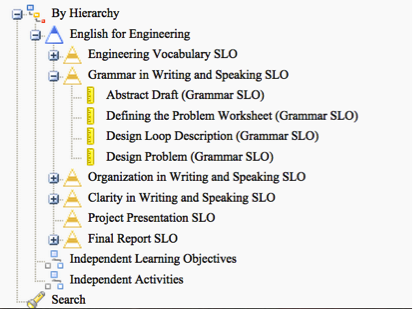
Generally, we have found it useful to incorporate immediate feedback and leveling game mechanics in D2L to better lead students toward those goals. More specifically, we want students to value the idea that routine work such as vocabulary quiz practice and completion can lead to useful discoveries when working towards larger goals, a concept valued by professional scientists. In order to enable such discovery, we created hidden caches of engineering design content and tutorials in 4 levels. Each level contained content that could aid students with their projects. However, to discover the content students needed to complete online vocabulary quizzes. If they scored over an 80%, students “leveled-up” and discovered the hidden content meant to help better design their Minecraft and Rube Goldberg projects and final written report. We believe that both of these game mechanics encourage a sense of discovery, an important tool for the aspiring scientist.
CONCLUSION
We do not aim to prove the effectiveness of a particular curricular design approach. Our goal is simply to provide effective communicative practice for our students. However, we have observed that gamification, content-based, and project-based approaches to curriculum design have motivated our students to more clearly associate the quality of their academic English skills with their identities as current or future engineering students. And we have done so by observing and assessing their work, both their designs and written work (See Figures 1.2 to 2.1 and the hyperlinks).
REFERENCES
Gee, J. P. (2007). What video games have to teach us about learning and literacy (Rev. and updated ed.). New York: Palgrave Macmillan.
Kapp, K. M. (2012). The gamification of learning and instruction : game-based methods and strategies for training and education. San Francisco, CA: Pfeiffer.
Learning, P. B. (2012). Project Based Learning. Goal-based Scenario, and Learning.
Mills, J. E., & Treagust, D. F. (2003). Engineering education—Is problem-based or project-based learning the answer?. Australasian Journal of Engineering Education, 3, 2-16.
Rube Goldberg Contest at Purdue. Retrieved September 6, 2014, from http://www.purdue.edu/newsroom/rubegoldberg/index.html
ADDITIONAL SCREENSHOTS OF THE MINECRAFT PROJECTS
|
|
|
|
|
|
|
|
|
|
|
|
|
|
|
REFERENCES
Gee, James Paul. What Video Games Have to Teach Us about Learning and Literacy. New York: Palgrave Macmillan, 2007.
Kapp, Karl M. The Gamification of Learning and Instruction: Game-based Methods and Strategies for Training and Education. San Francisco, CA: Pfeiffer, 2012.
Learning, P. B. (2012). Project Based Learning. Goal-based Scenario, and Learning.
Mills, J. E., & D. F. Treagust. “Engineering Education—Is Problem-based or Project-based Learning the Answer?” Australasian Journal of Engineering Education 3 (2003): 2-16.
“Rube Goldberg Contest at Purdue.” Purdue News. Accessed September 6, 2014. http://www.purdue.edu/newsroom/rubegoldberg/index.html.


 Russell Moon, Career Track Instructor at University of Oregon.
Russell Moon, Career Track Instructor at University of Oregon. Nick Einterz, Lecturer at the International English Center, University of Colorado-Boulder.
Nick Einterz, Lecturer at the International English Center, University of Colorado-Boulder.